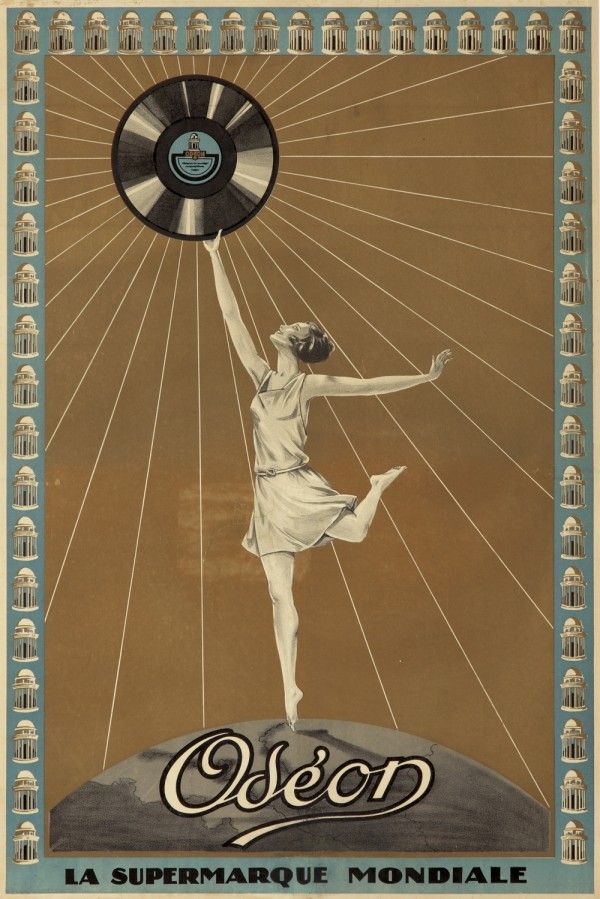
This research explores the key role that women played in the early development of the recorded music industry, focusing on the period between the 1890s, when Edison’s phonograph first experienced commercial success, until the Great Depression of the early 1930s.
Study made by Áurea Domínguez and supported by the City of London Phonograph and Gramophone Society Richard Taylor Bursary Grant 2023. The topic will be presented within various international contexts, including academic conferences and presentations.

Women in phonograph advertisements
A differentiated analysis of female figures in the advertising of phonographs and gramophones appearing in countless magazines and newspapers of the period allows us to approach domestic music in an entirely new context. The image of women in advertising, especially but not only, in advertising aimed at women, women’s magazines is evidence of the relevance they had in the early recording industry and in decisions about what music was being played in the domestic sphere.

A large part of the advertising campaigns featured women at their centre and the female figure is prominent in the majority of advertisement illustrations and photographs. A multi-faceted review of the advertising used to promote phonographs, gramophones, and recordings, coupled with research into other contemporary sources, will bring us closer to understanding not only the development of the recorded music industry between 1890 and 1930, but also the significant role of women as performers and consumers of these new sound technologies.
As the new sound technologies of recording and reproducing instruments began to be incorporated into the domestic sphere, the musical dynamics of private households adapted accordingly. Women played a decisively active role in the musical activity of fin de siècle bourgeois households and it is worth asking whether their status as musical decision-makers continued into the early years of the twentieth century.
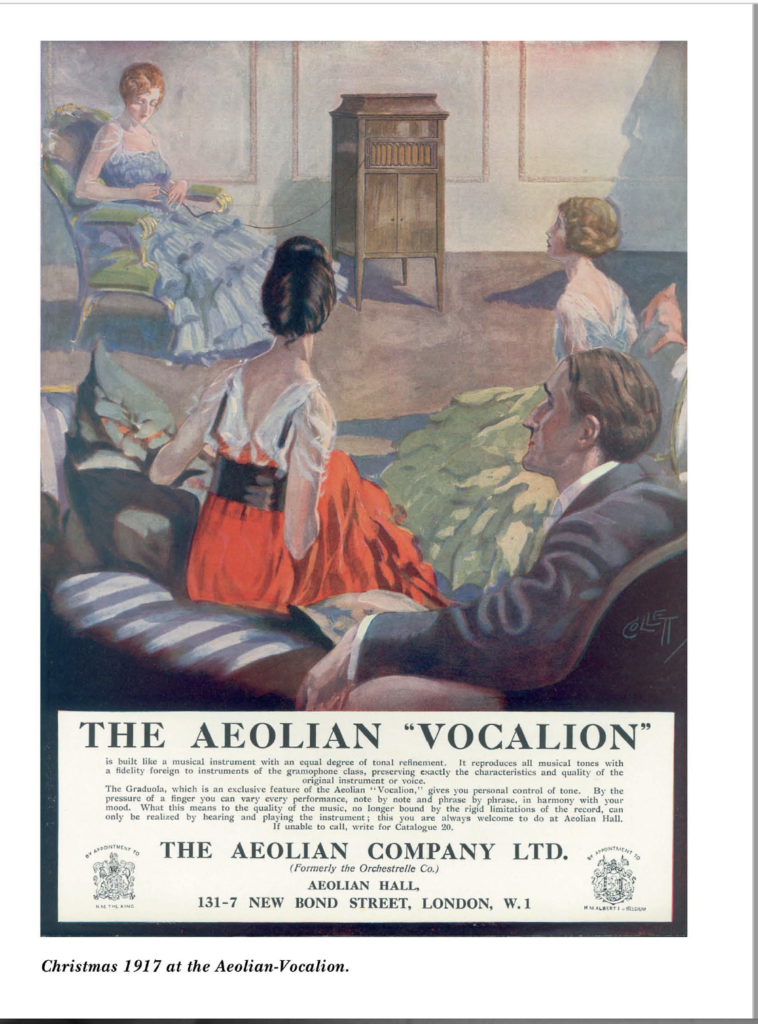
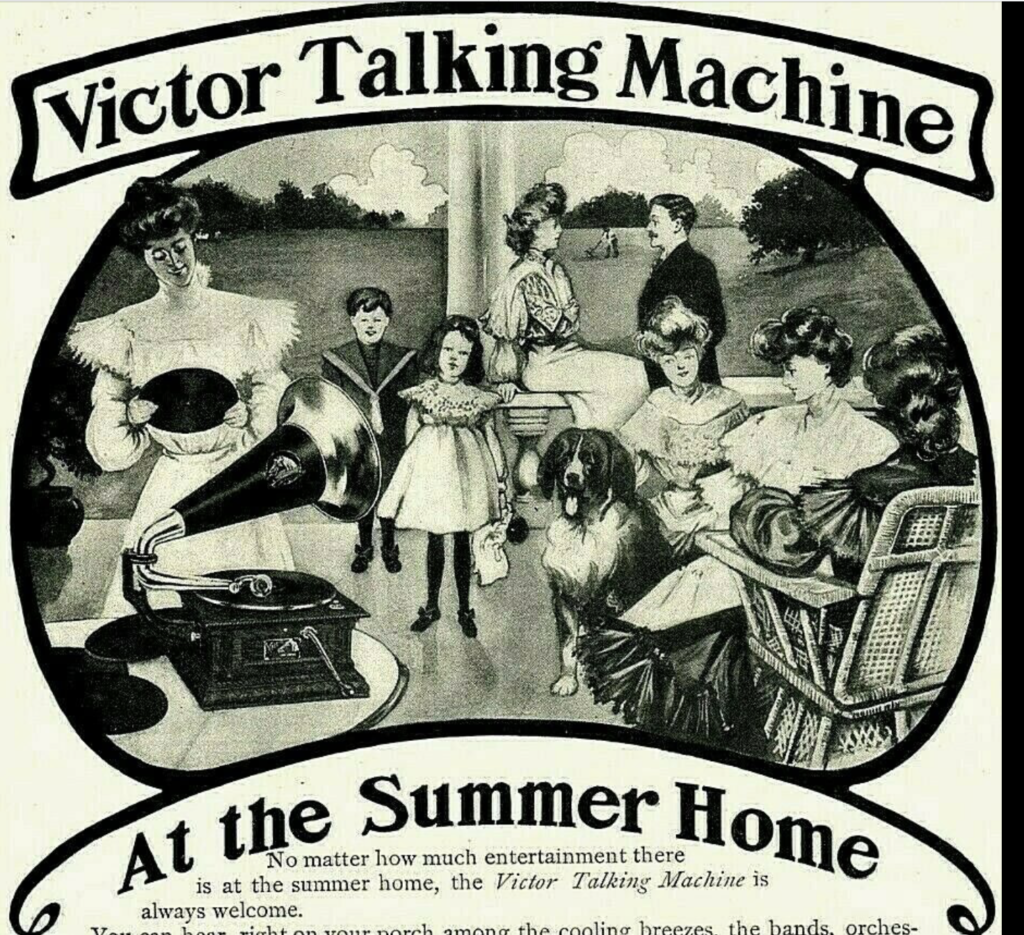

Music education

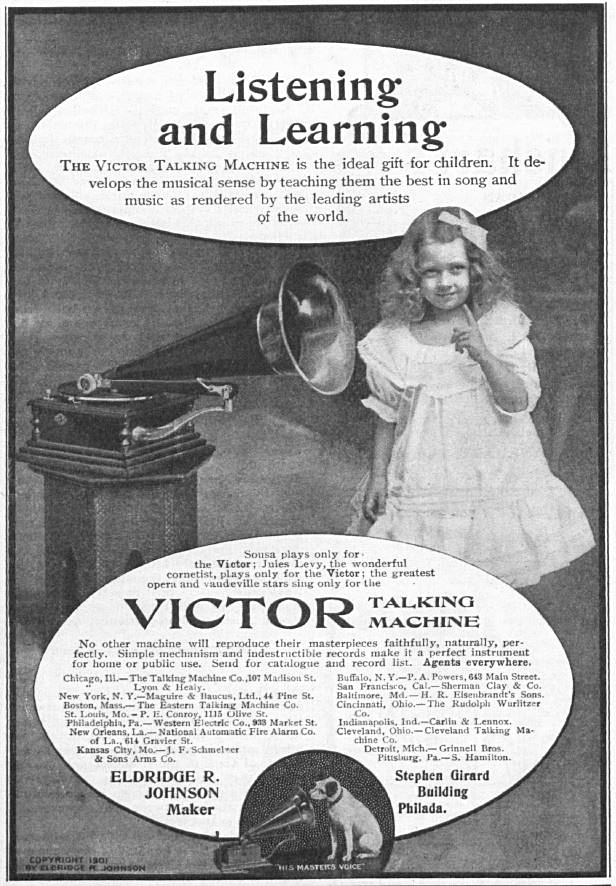

Music at home
Although music was traditionally seen as an important part of women’s general education during the nineteenth century, they were often excluded from composition and public performances. Their skills were relegated to the household for their family to enjoy.
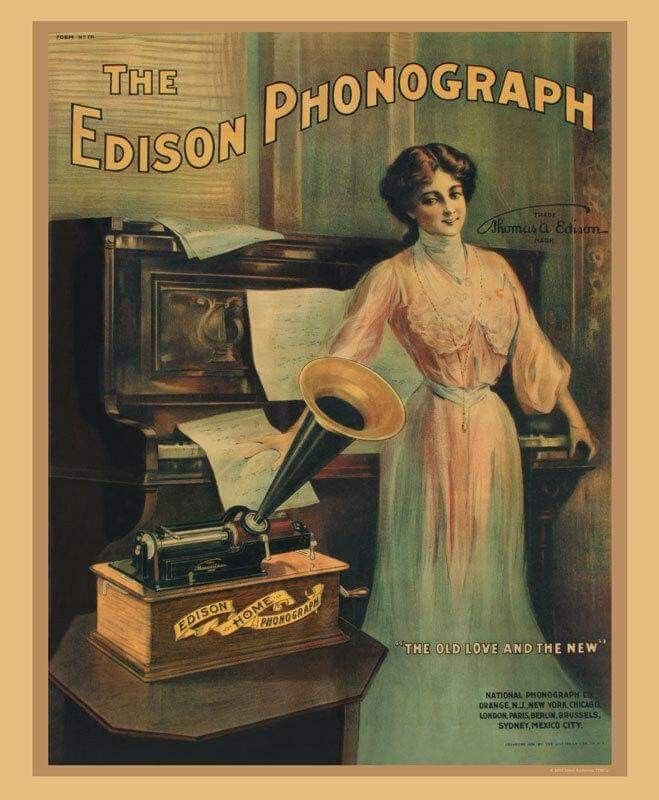

Women playing the records
The phonograph, and soon after the gramophone, transitioned the process of listening and musical reception away from the live performance of an instrument, changing the role of a late Victorian lady from playing the piano to becoming an expert in the newest developments in early sound technology and the performance of recorded music.

Recorded music was introduced into society as something intended to be enjoyed at home, the environment for which women were typically responsible at that time.
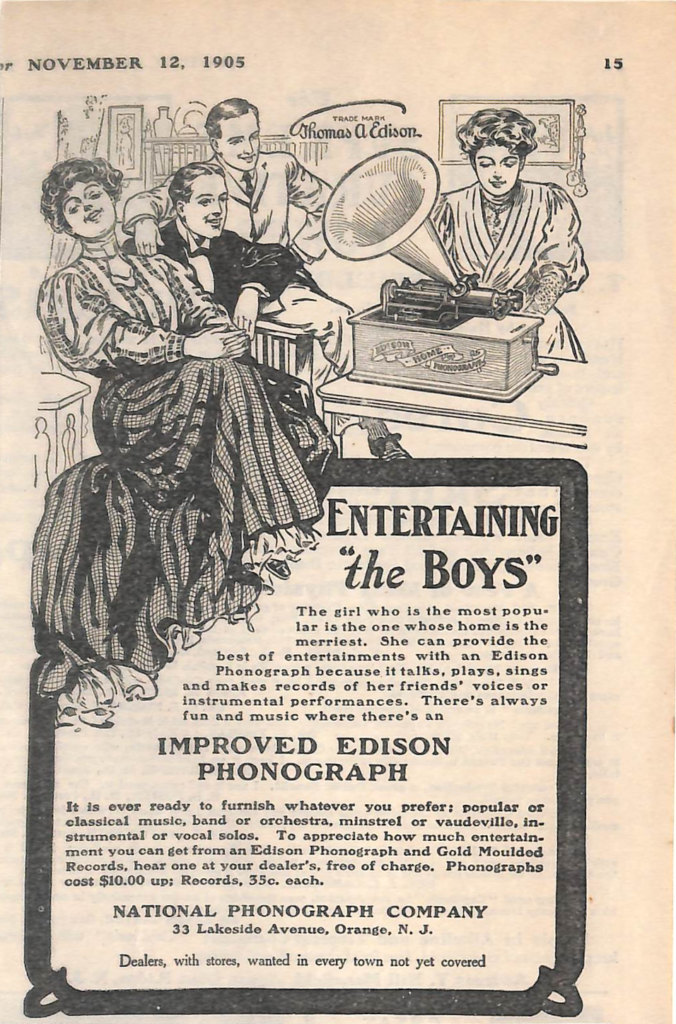
Buying and selling talking machines

Phonographs and gramophones were consumer goods that were generally selected for purchase by women. As they were the ones responsible for the interior decoration of their homes, they were also in charge of selecting the appropriate machine for music reproduction, as well as the most appropriate type of music to play—after all, they were the ones spending most of the time there.
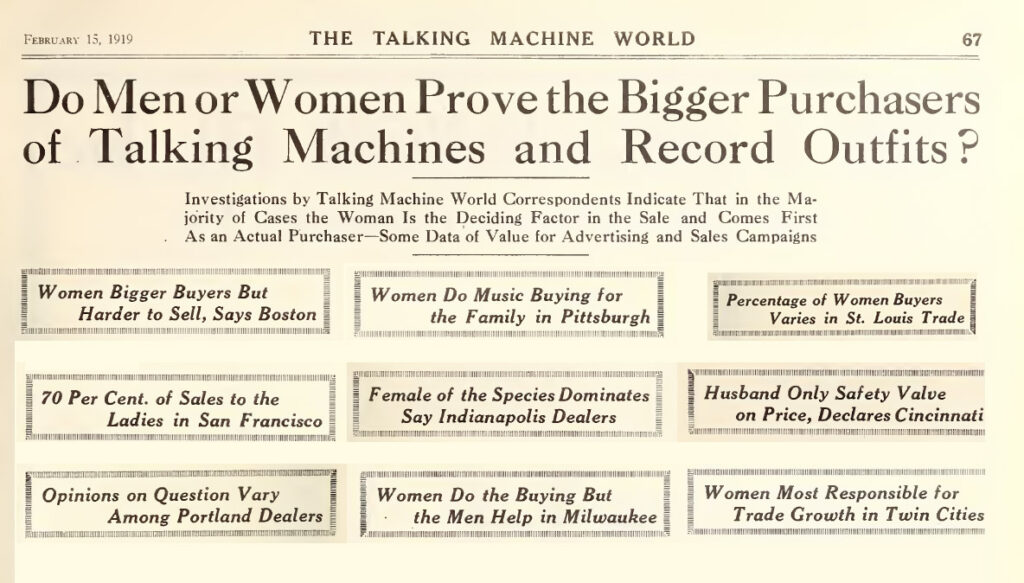

Burgeoning department stores, which quickly became an important marketplace for domestic consumption, created sophisticated phonograph and record departments with music rooms that not only demonstrated the possibilities of the instruments, but also created a space for women to assess how the gramophones would fit in their home environment.

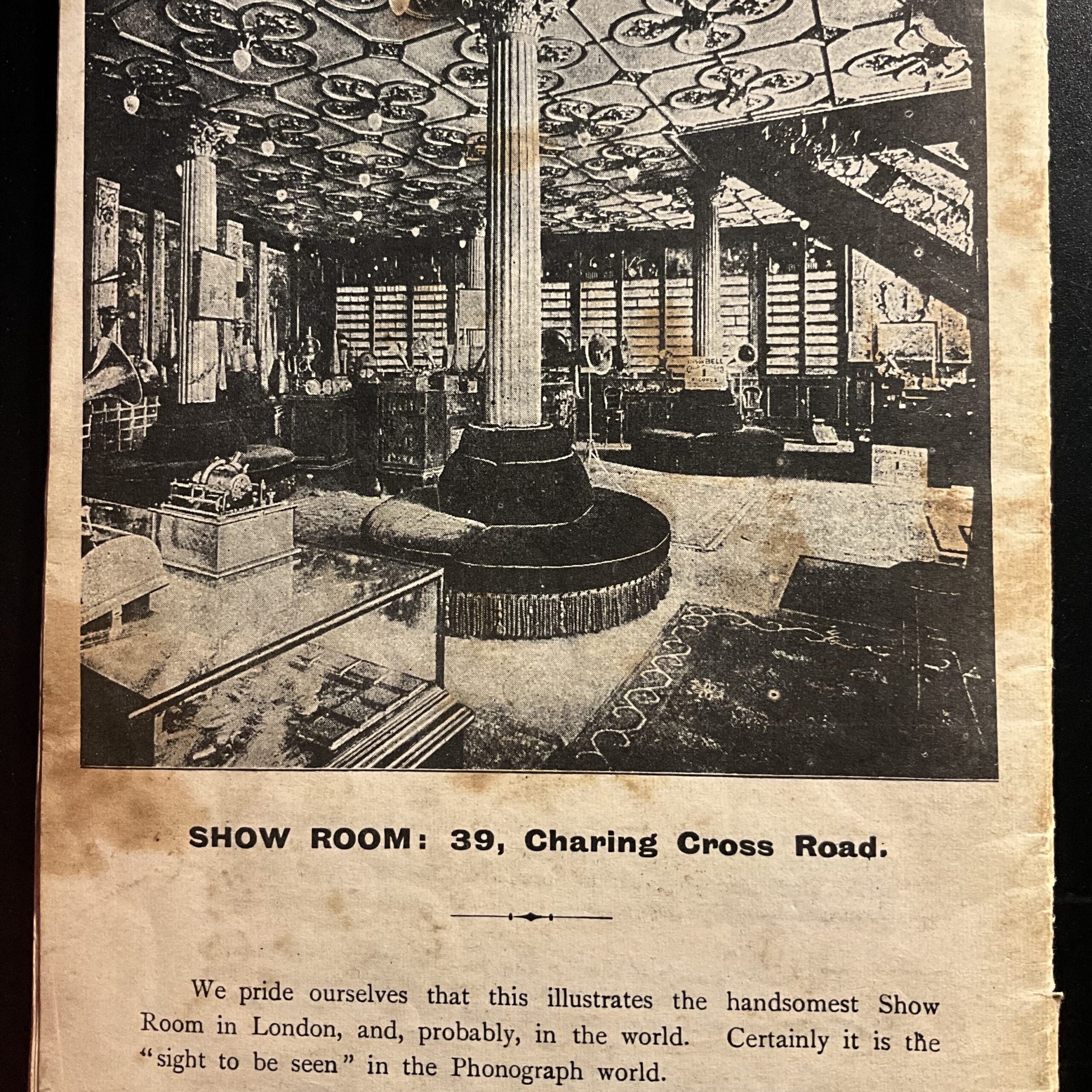
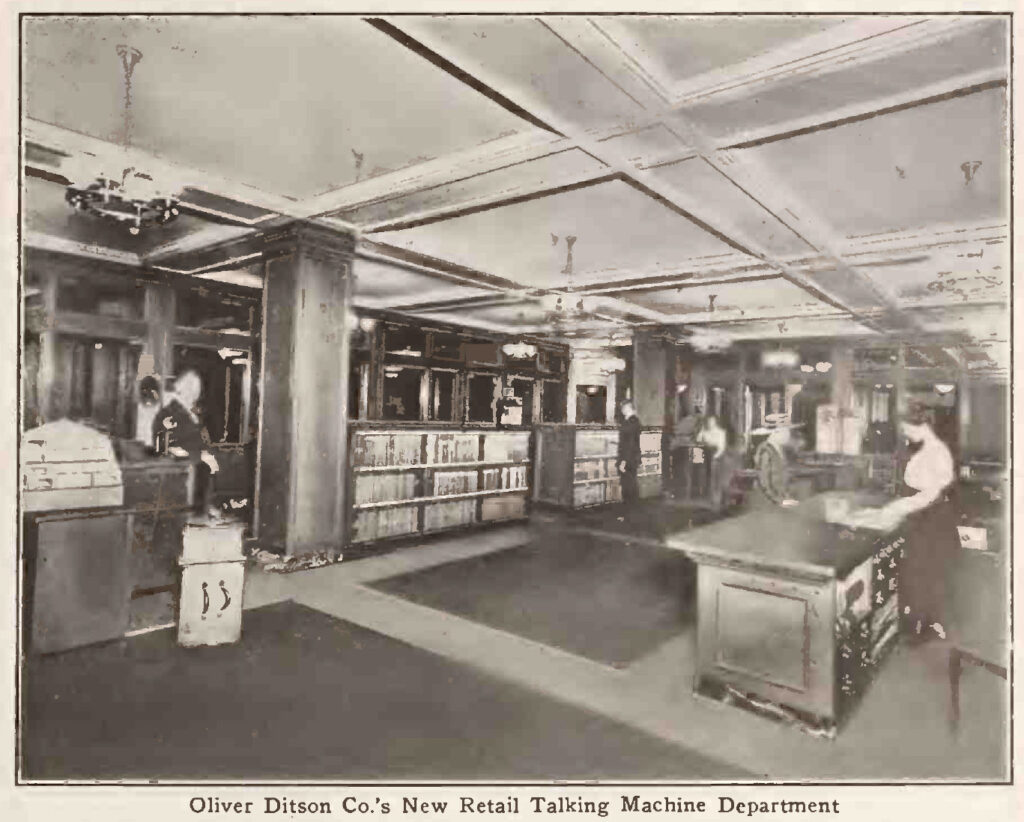
In one sense, phonographs were simply domestic consumer products like any others, for example home sewing machines, and washing machines. The recorded music industry understood this and created campaigns and publicity aimed at women, as they were the most likely to purchase their goods.
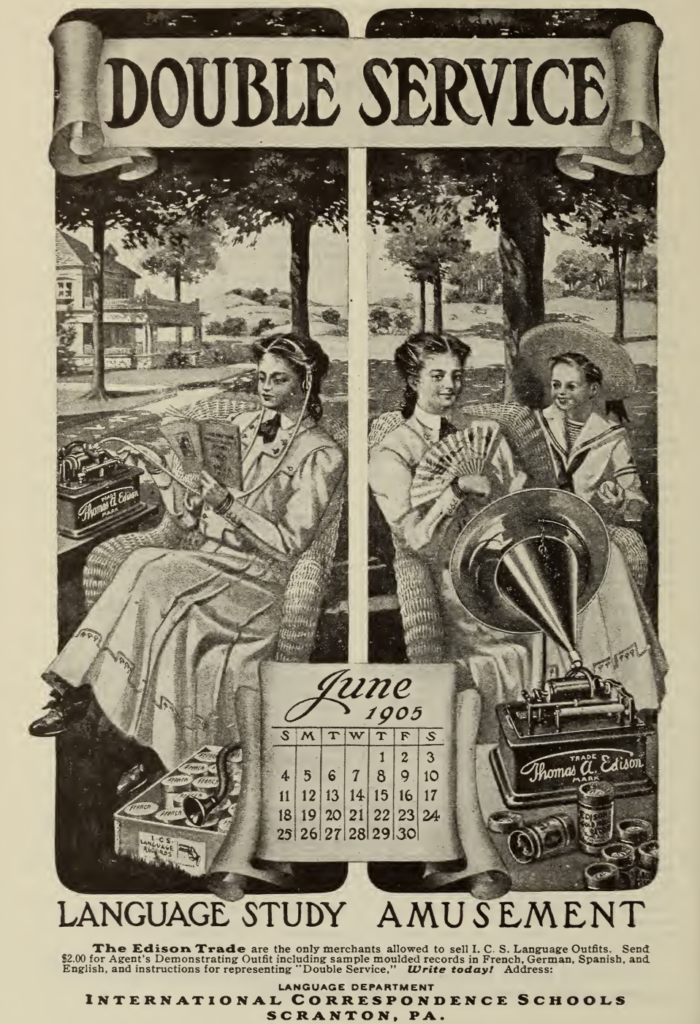

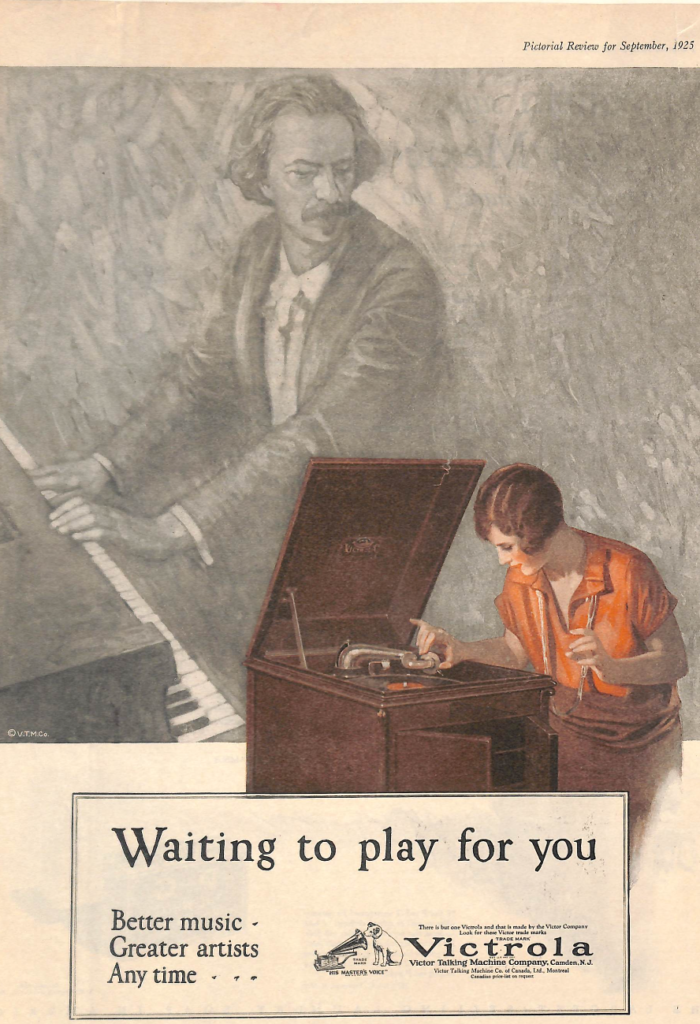
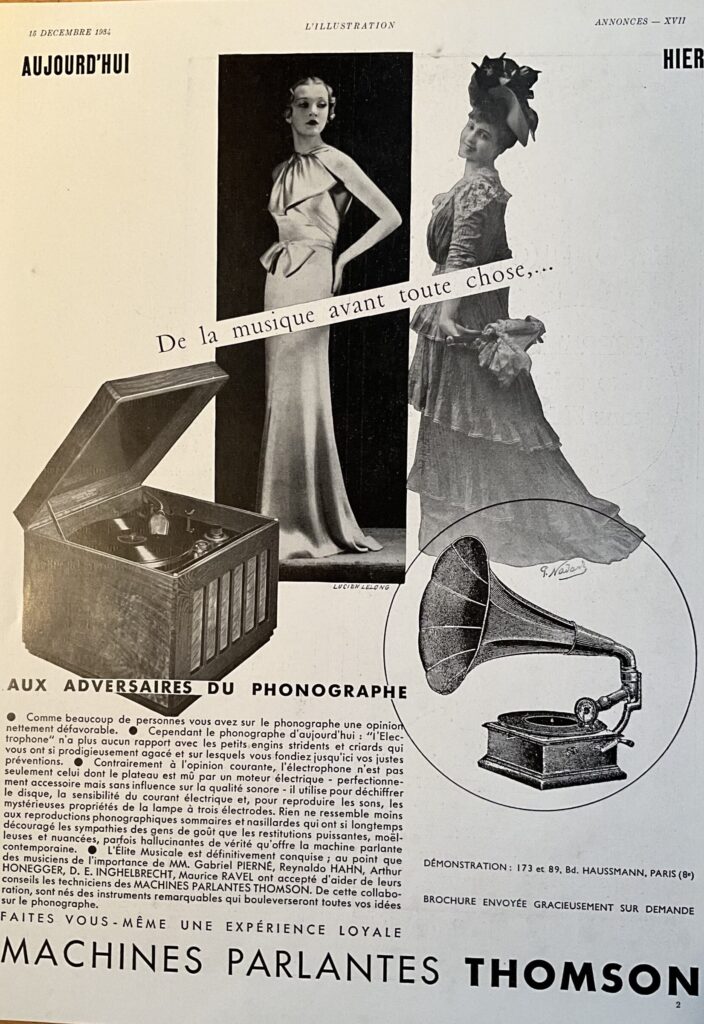
Many stores chose to hire women as sales staff, as their traditional music education gave them the background necessary to memorise and navigate the long and the ever-changing lists of new record releases.
This example of the questions for a job interview for a sales women shows the knowledge required for the position. “Selecting efficient record sales women” TMW 15 December 1925, p.62
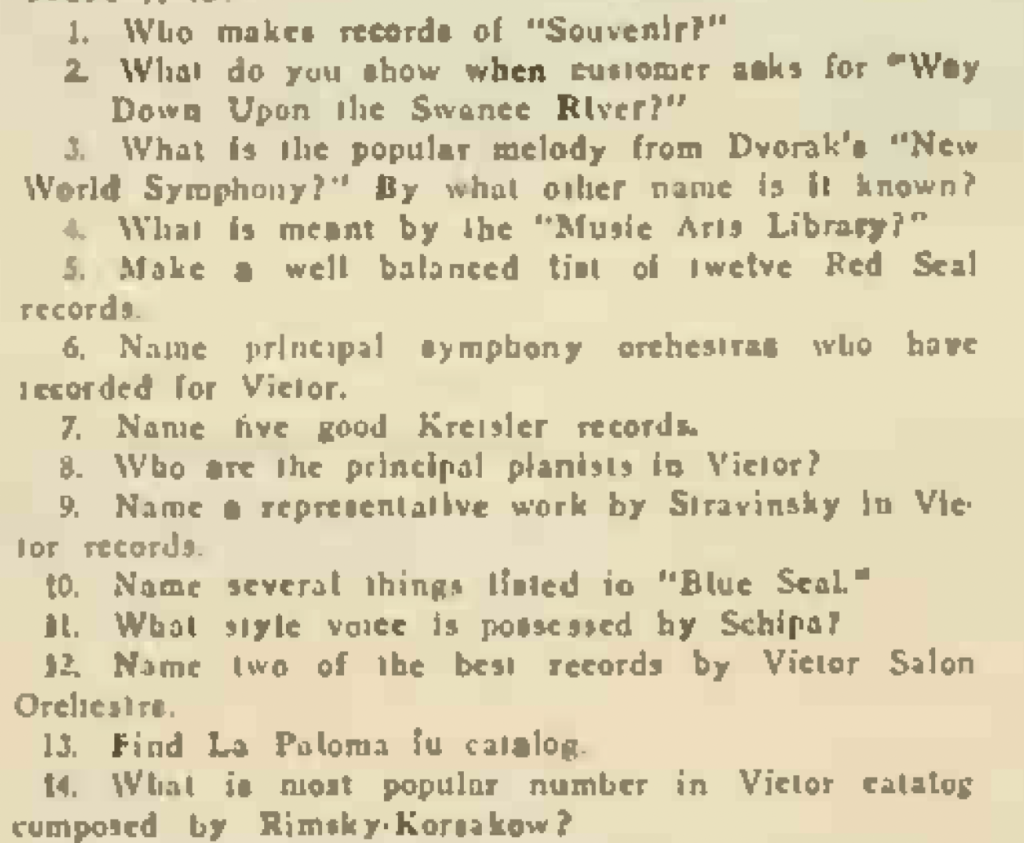
New life style
As new models were introduced, for example the portable gramophones of the 1920s, they were marketed to and adopted by women as lifestyle or fashion accessories. Furthermore, as the record industry flourished, some women were able to leverage their experience as domestic record consumers into paying jobs.
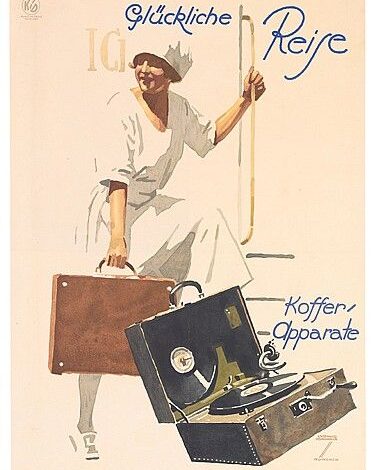
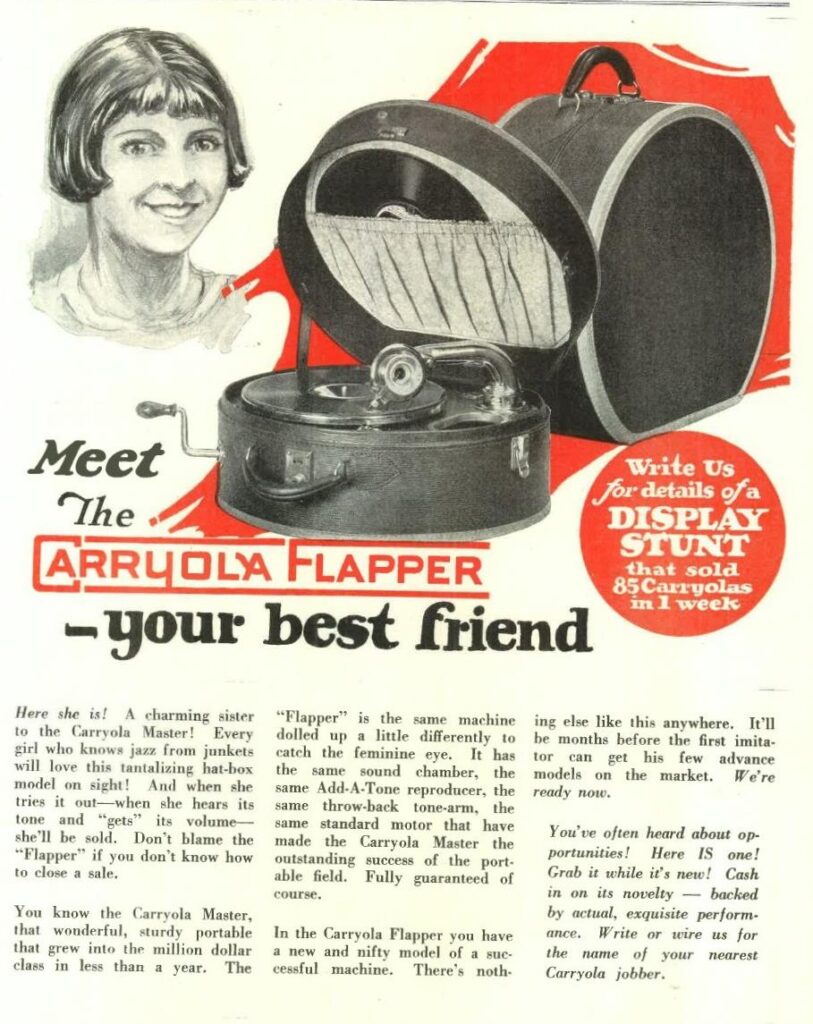
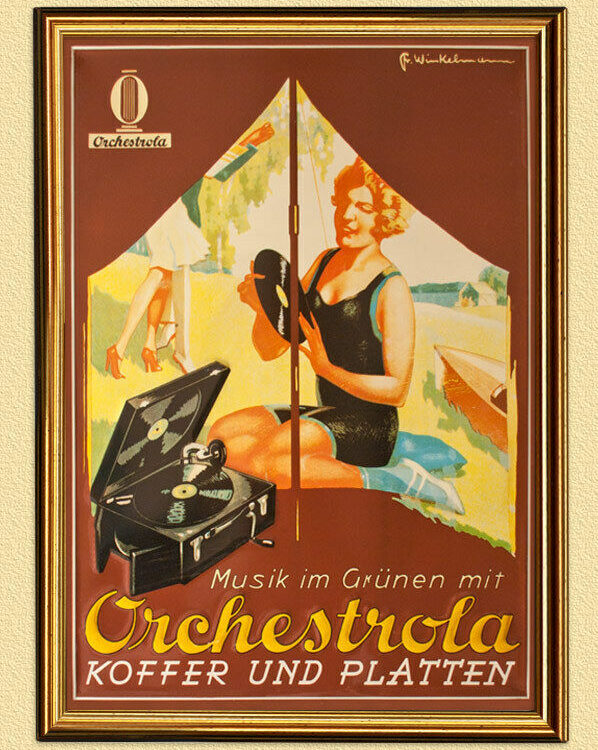

1930s: Change of paradigms
It was only in the 1930s, in the wake of the global economic crisis and the breakdown of the entire consumer system, that the female-oriented marketing strategies of the music industry changed.
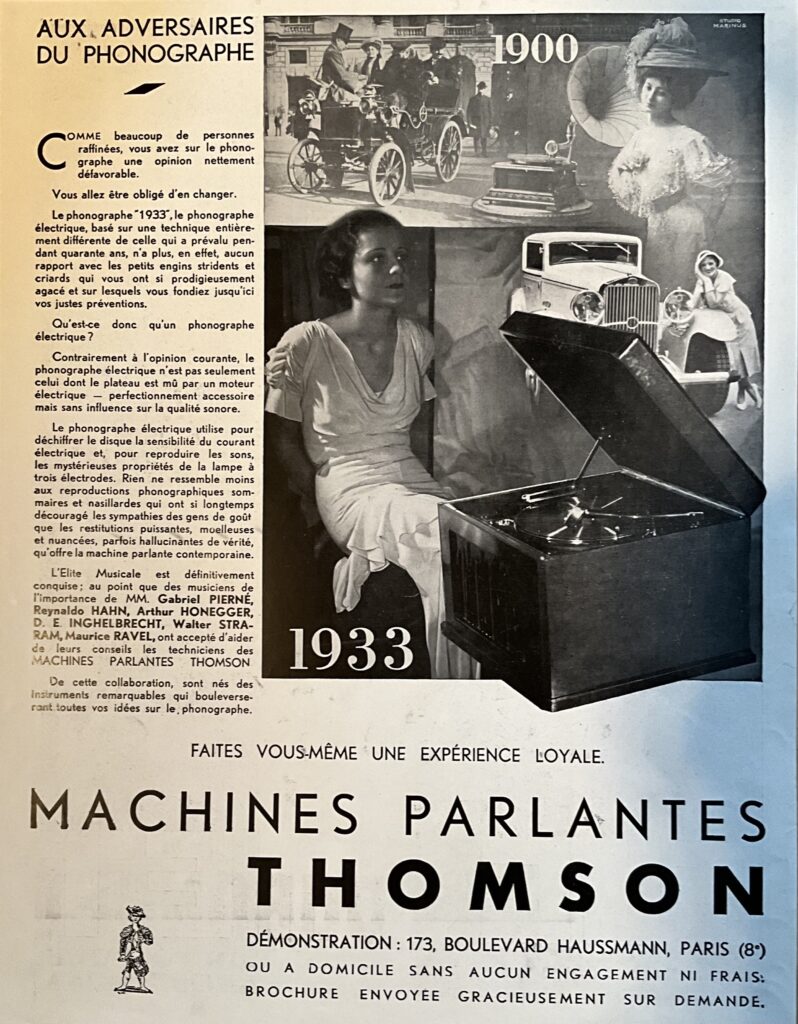


Info box
Awards
This research was made posible thanks to the Richard Taylor Bursary Grant 2023 from the City of London Phonograph and Gramophone Society

Events
Research topic presented at:
Info box
Bangor University
The Fourth International Conference on Women’s Work in Music – Department of Music, Drama and Performance, Bangor University, UK, 4–6 September 2023.
Info box
Universitat Autònoma de Barcelona
Research seminar